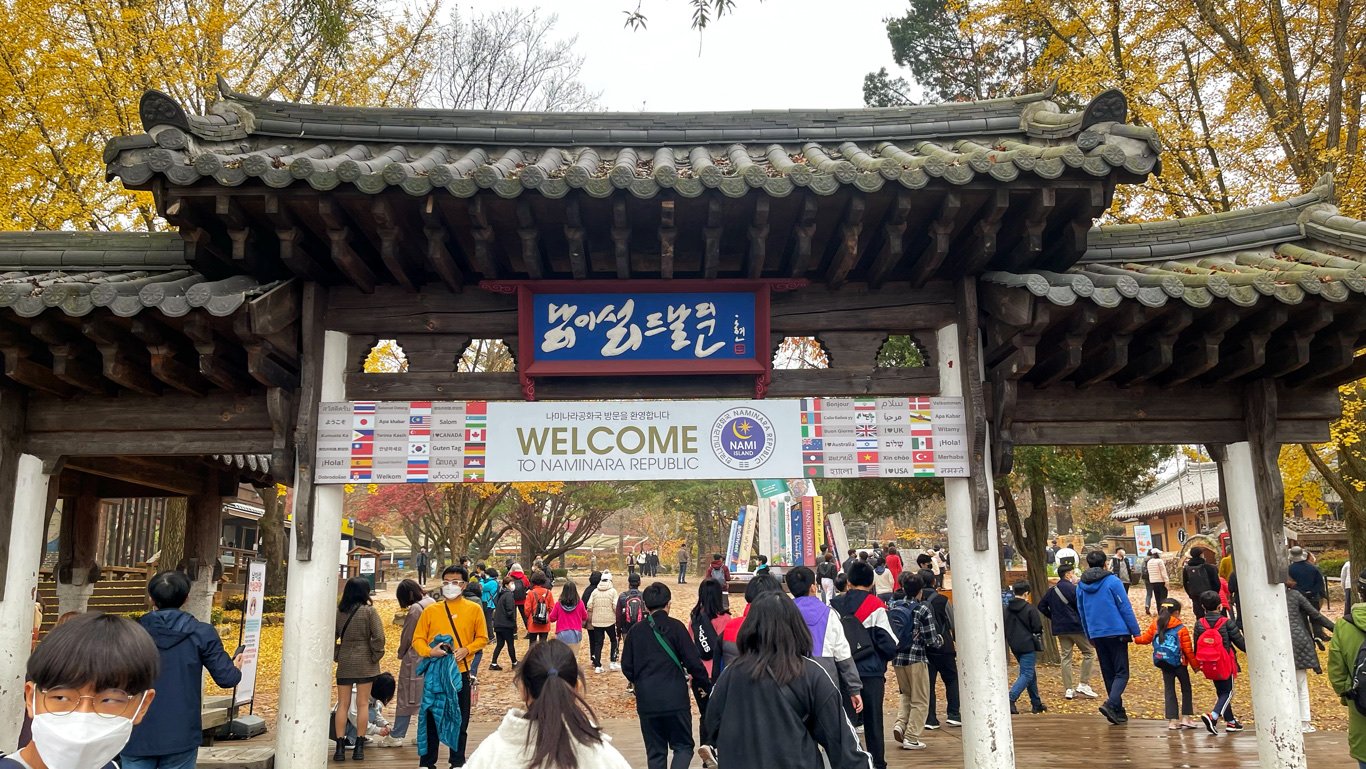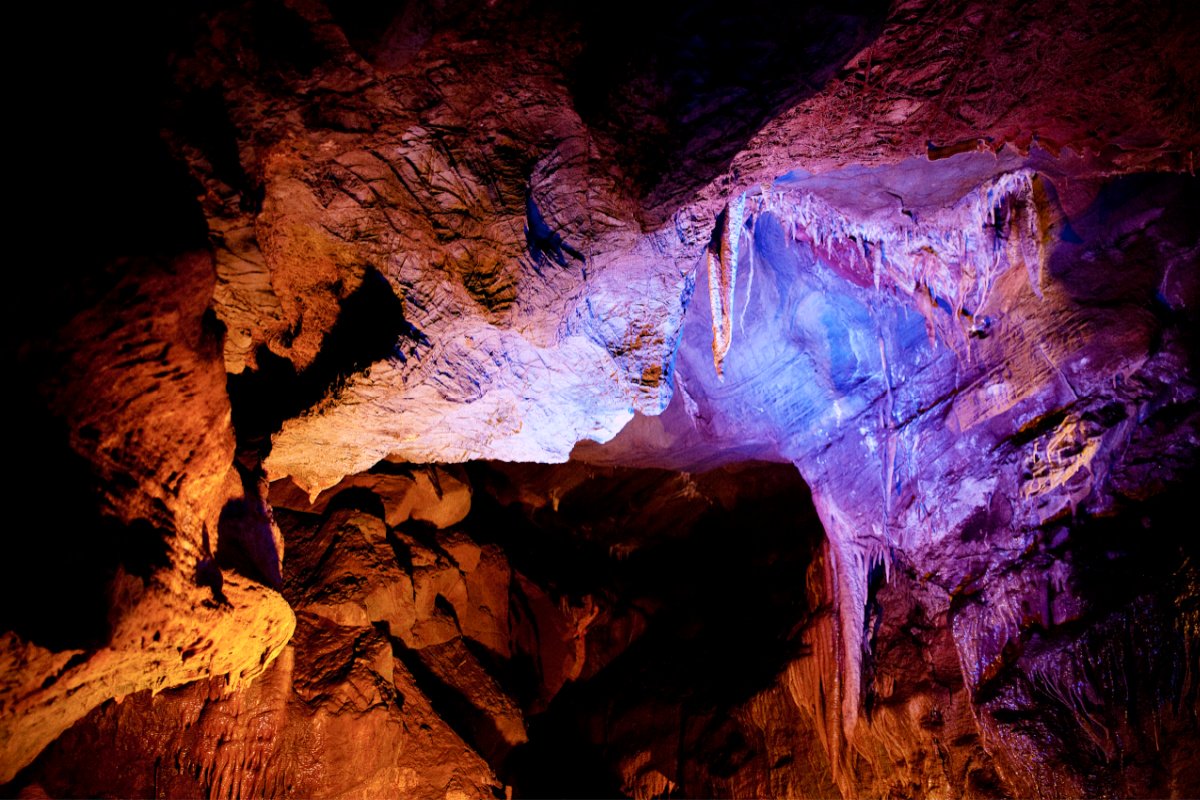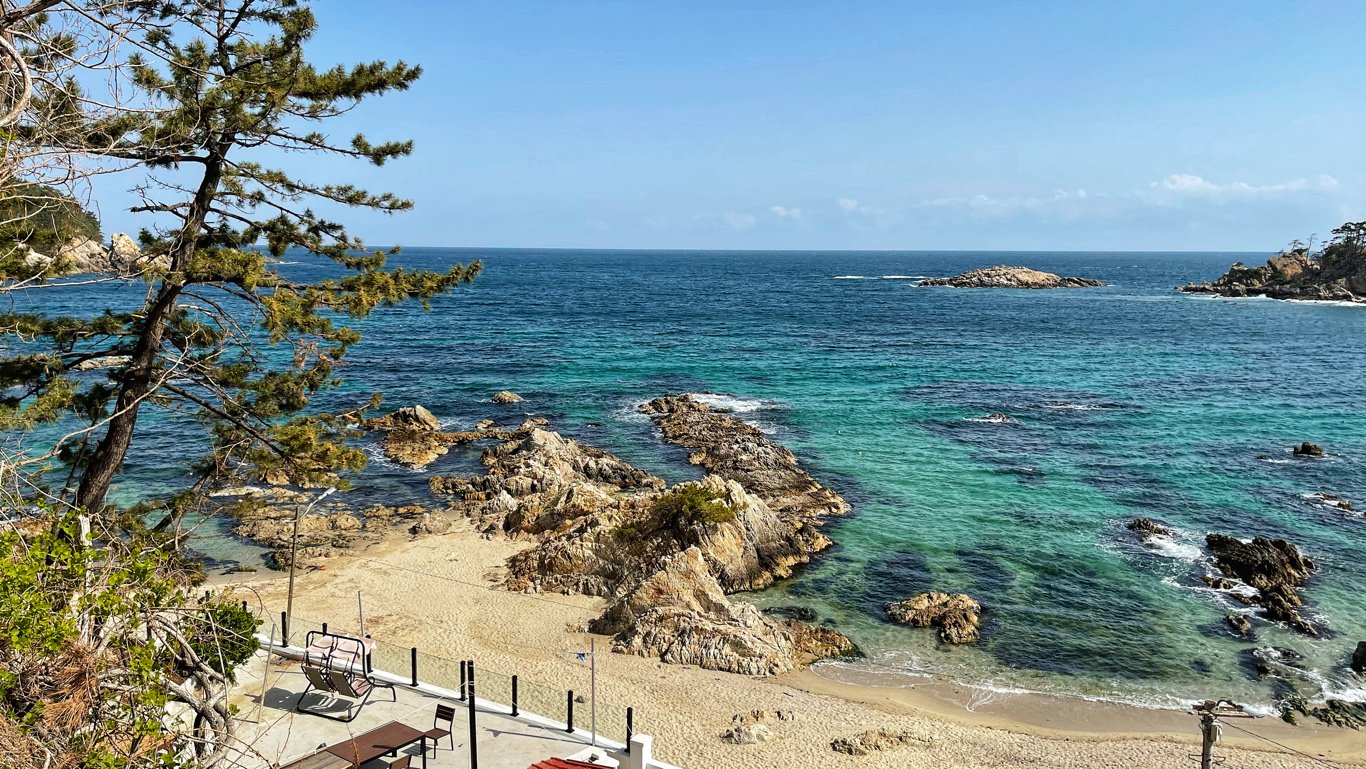Gyeongpodae Pavilion
In Gangneung
 This is an image of the Gyeongpodae Pavilion in Gangneung, capturing its serene beauty alongside the East Sea and Gyeongpo Beach.
This is an image of the Gyeongpodae Pavilion in Gangneung, capturing its serene beauty alongside the East Sea and Gyeongpo Beach.Gyeongpodae Pavilion in Gangneung
Gyeongpodae is a breathtaking pavilion on a hilltop near Gangneung City in Gangwon Special Self-Governing Province.
The pavilion features an octagonal roof structure and offers stunning panoramic views of the surrounding landscape, including the East Sea and the nearby Gyeongpo Beach.
With a frontal width of 5 kan and a lateral width of 5 kan, this pavilion is a true architectural masterpiece that showcases the rich cultural heritage of South Korea.
Gyeongpodae is also one of the Eight Scenic Views of Gwandong, making it a must-visit destination for anyone interested in exploring the region's natural beauty and cultural wonders.
Whether you're a history buff, an architecture enthusiast, or simply someone who loves to soak in the beauty of nature, Gyeongpodae is the perfect destination for you.
On December 16, 1971, it was designated as Cultural Heritage No. 6 of Gangwon Special Self-Governing Province, and on December 30, 2019, it was designated as Treasure No. 2046 of the Republic of Korea.
Gangwon Province Cultural Heritage
Gyeongpodae is a picturesque pavilion on a hill north of Gyeongpo Lake and is considered one of the Eight Scenic Views of Gwandong. Its construction dates back to the 13th year of King Chungseok of Goryeo in 1326 and has undergone several repairs since then.
It is believed that King Taejo (reigned 1392-1398) and King Sejo (reigned 1455-1468) personally scaled the hill to admire the breathtaking scenery around Gyeongpodae.
The pavilion's octagonal roof measures five kan on the front and five kan on the side. Gyeongpodae has a unique three-dimensional plan with varying deck heights, making it an architectural marvel.
In 1899, County Magistrate Jeongheon oversaw the construction of two additional pavilions, Deungwolheon to the south and Huseonham to the north, further enhancing the beauty of the already stunning Gyeongpodae.
The pavilion's octagonal roof measures five kan on the front and five kan on the side. Gyeongpodae has a unique three-dimensional plan with varying deck heights, making it an architectural marvel.
In 1899, County Magistrate Jeongheon oversaw the construction of two additional pavilions, Deungwolheon to the south and Huseonham to the north, further enhancing the beauty of the already stunning Gyeongpodae.
The plaque outside the pavilion bears the name "Gyeongpodae," written in the handwriting of Yu Hanji, a famous calligrapher from the Joseon Dynasty.
The plaque inside is equally impressive, written in the handwriting of Yi Ik-hoe, renowned for his calligraphic skills during the same period.
Visitors to Gyeongpodae Pavilion in Gangneung can witness the beauty of the surrounding landscape, including the vast expanse of Gyeongpo Lake and the majestic mountains in the distance.
Unsurprisingly, this pavilion has been a source of inspiration for poets, painters, and writers throughout the centuries.
Reason for Treasure Designation
Gyeongpodae is a large pavilion built in 1326 during the mid-Goryeo period. It has detailed records of one reconstruction and several repairs, and there are records before its construction, which allow us to confirm the historical changes of Gyeongpodae in each era.
It has a frontal width of 5 kan (1 kan = 2 meters approx.) and a lateral width of 5 kan.
The pavilion was a popular destination for poets and literati during the late Goryeo period and the Joseon Dynasty. Visitors enjoyed the natural scenery and studied and cultivated their minds.
Kim Geuk-gi wrote a poem called "Gyeongpodae" during the mid-Goryeo period, and Song Gang Jeongcheol's "Eight Scenic Views of Gwandong" was also written here during the Joseon Dynasty.
Gyeongpodae has a unique three-tiered deck structure, and the configuration of the two-tiered veranda is unprecedented.
The highest veranda takes the form of a stepped platform, and the lower veranda has a unique configuration with protruding handrails as it goes up, supported by gallows stairs.
Gyeongpodae is a pavilion from the late Joseon period and a representative pavilion of Korea that encompasses modern and contemporary history.
It is a place of deep historical significance with sufficient historical, artistic, and academic value to be designated as a national cultural heritage (treasure).
Scenic Sites Designation
On December 30, 2013, Gangneung Gyeongpodae and Gyeongpo Lake were designated the 108th scenic site of the Republic of Korea.
Gangneung Gyeongpodae was built in 1326, the 13th year of King Chungseok of Goryeo, by Park Suk-jeong, a magistrate in the Jungsabu.
It is one of the Eight Scenic Views of Gwandong and has a long-standing tradition of pavilion culture in the Gangneung area.
According to the record in "Gyeongpodae Sinjeonggi," authored by Anchu, the purpose of Gyeongpodae's construction was to provide a pavilion for people who came to visit on windy days and found it inconvenient without one.
Its discovery of the previous era's central and large stones during the construction indicates that a pavilion-shaped building existed long before this era.
Gyeongpodae Pavilion in Gangneung County is renowned for its outstanding natural stone lake, Gyeongpo Lake.
Since ancient times, it has been a famous scenic spot frequented by numerous poets, literati, and artists. Due to its picturesque landscapes, it holds high historical and cultural significance.
The natural scenery of Gyeongpodae and Gyeongpo Lake is characterized by a combination of cultural and scenic elements, offering a place of high spatial value.
The painting of Gyeongpodae by Kim Sang-seong in the 22nd year of Yeongjo's reign (1746) depicts a panoramic view of Gyeongpodae and Gyeongho from a high vantage point.
It separates Gyeongho into inner and outer lakes and portrays an old fisherman and seagulls on the lake. Additionally, it depicts Jukdobong and a plethora of flowers blooming among pine trees, capturing the atmosphere of spring.
Furthermore, it illustrates the sunrise over the East Sea beyond Gangmun and the sailing ships in the distance, depicting the former natural and cultural environment of Gyeongpo Lake, indicating its high value.
Inside the pavilion of Gyeongpodae, there are literary plaques by various scholars, including Yi I's "Gyeongpodae Fu," written when he was ten years old, and poetry by Sukjong and Soha-mang, which holds high cultural value.
Gangneung Gyeongpodae was initially established by Park Suk-jeong in the mountain of Inwolsa behind Banghaejeong in 1326, the late Goryeo period, and later relocated to its current location in 1508 by Gangneung Busa Han Geup.
After several reconstructions, it has maintained its present appearance for about 680 years, possessing excellent historical and cultural landscape qualities along with Gyeongpo Lake.
Gangneung Gyeongpodae represents an intermediate point in transforming pavilion construction from the style of local aristocrats in the 16th century, making it architecturally significant.
Seogeojung's "Dongin Sihwa" describes the love story between Seolhwa and Hongjang at Gyeongpodae, making it a place of high value in oral literature.
- 문화재청고시제2019-176호(강릉 경포대 등 10건의 누·정 문화재 국가지정문화재<보물> 지정), 제19658호 / 관보(정호) / 발행일 : 2019. 12. 30. / 338 페이지 / 2.2MB
- ↑ 문화재청고시 제2012-125호,《국가지정문화재(명승) 지정 및 지형도면 고시(강릉 경포대와 경포호)》, 문화재청장, 대한민국 관보 제18171호 442쪽, 2012-12-30
- Home
- Gangwondo Attractions
- Gyeongpodae Pavilion In Gangneung
Get Exciting Activities
Book one of our exciting activities today to experience the thrill of a lifetime! Take advantage of this opportunity and secure your spot in advance.
Hotel Map Guide
Find your affordable, accessible, and comfortable hotel in Seoul at Agoda.Com. See the hotel map below...
Hotel Booking Guide
Find affordable and amazing hotels on Agoda.com using the search box below. Book now to enjoy great discounts and save!







New! Comments
What do you think about this page? Leave me a comment in the box below.